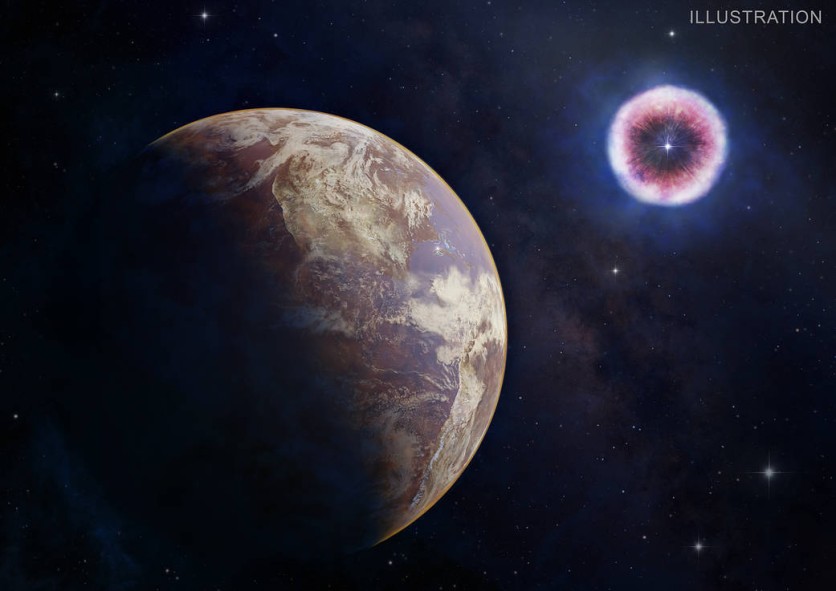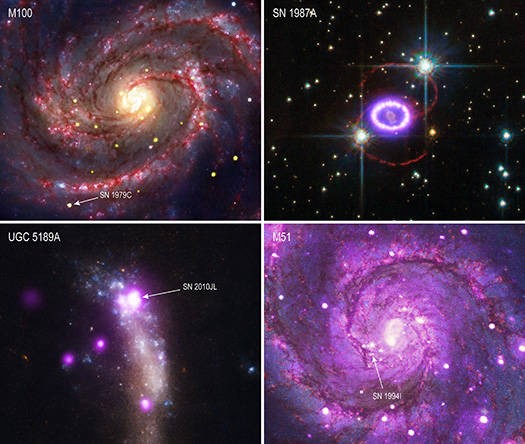Supernovae are powerful and luminous explosions that occur when a massive star reaches the end of its life cycle. When the fuel in the star's core is exhausted, the core collapses under its gravity and heats up to incredible temperatures, triggering a catastrophic explosion.
The explosion is so bright and intense that it can briefly outshine an entire galaxy and release vast amounts of energy and heavy elements into space.
But despite the beauty of bright supernovae, they may also pose risks to life on other planets.
New research conducted by astronomers, utilizing data obtained from various telescopes, including NASA's Chandra X-ray Observatory, has revealed a new potential hazard for life on planets similar to Earth.

Supernova Shockwaves
According to the study, there is a phase in which intense X-rays originating from supernovae can impact planets situated over 100 light-years away.
The results of this research carry significant implications for the exploration of exoplanets and their potential habitability.
The danger is a result of a supernova's shockwave striking the dense gas in the vicinity of the exploded star, generating a substantial amount of X-rays. These X-rays may take months or even years to reach a planet similar to Earth and can persist for decades.
By analyzing X-ray data from 31 supernovae and their aftermath, primarily gathered from NASA's Chandra X-ray Observatory, Swift and NuSTAR missions, and ESA's XMM-Newton, the study reveals that planets positioned up to about 160 light-years away can encounter lethal levels of radiation.
Previously, most of the investigations into the impacts of supernova explosions had been focused on two phases: the intense radiation emitted by a supernova in the days and months following the explosion and the high-energy particles that arrive hundreds to thousands of years later.
If a surge of X-rays sweeps over a planet located in the vicinity, the radiation can significantly alter the atmospheric chemistry of the planet.
This process can potentially eliminate a significant amount of ozone, which acts as a shield against the dangerous ultraviolet radiation of its parent star, according to the study.
According to the researchers, among the four supernovae featured in the images, SN 2010jl has generated the highest amount of X-rays, posing a lethal risk to Earth-like planets within approximately 100 light-years.

Is Earth at risk of Supernovae?
While the Earth and the Solar System are not at risk of a supernova explosion, many other planets in the Milky Way are vulnerable. Such an occurrence would decrease the size of the Galactic Habitable Zone, the area in the Milky Way where life as we know it could exist.
The researchers emphasize the importance of further observing supernovae that interact with their surroundings for extended periods after the explosion. Due to the scarcity of X-ray observations of these types of supernovae, continued monitoring is necessary.
The new findings add to the challenges of identifying and studying exoplanets that could support life. By revealing the dangers posed by supernovae, astronomers can better understand the conditions that allow life to emerge and thrive on a planet.
The findings of the study were published in The Astrophysical Journal.
Related Article : NASA's Chandra X-Ray Spots Surprisingly Lonely Galaxy

ⓒ 2025 TECHTIMES.com All rights reserved. Do not reproduce without permission.




